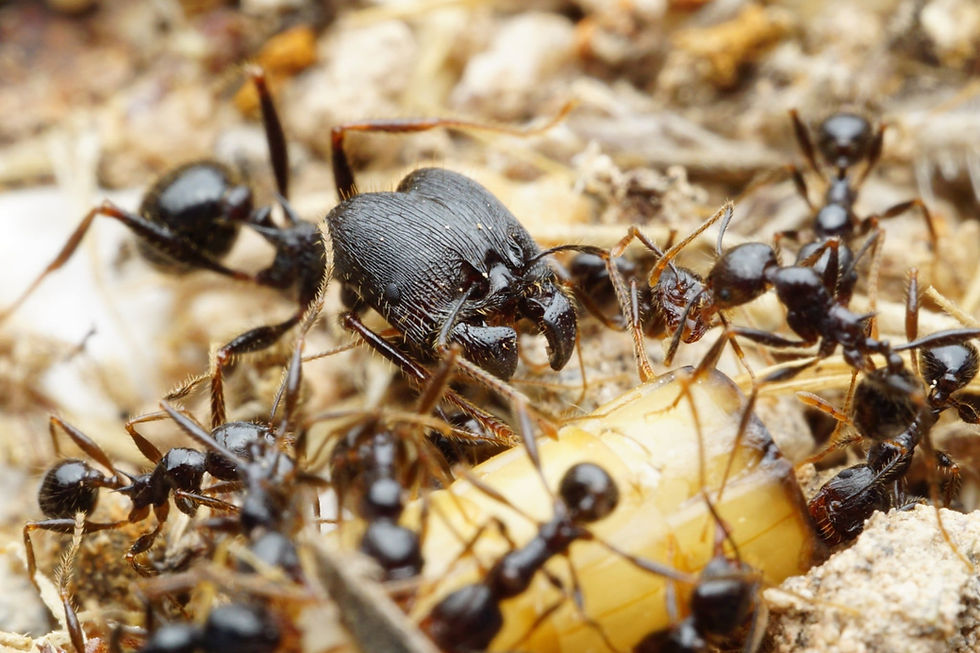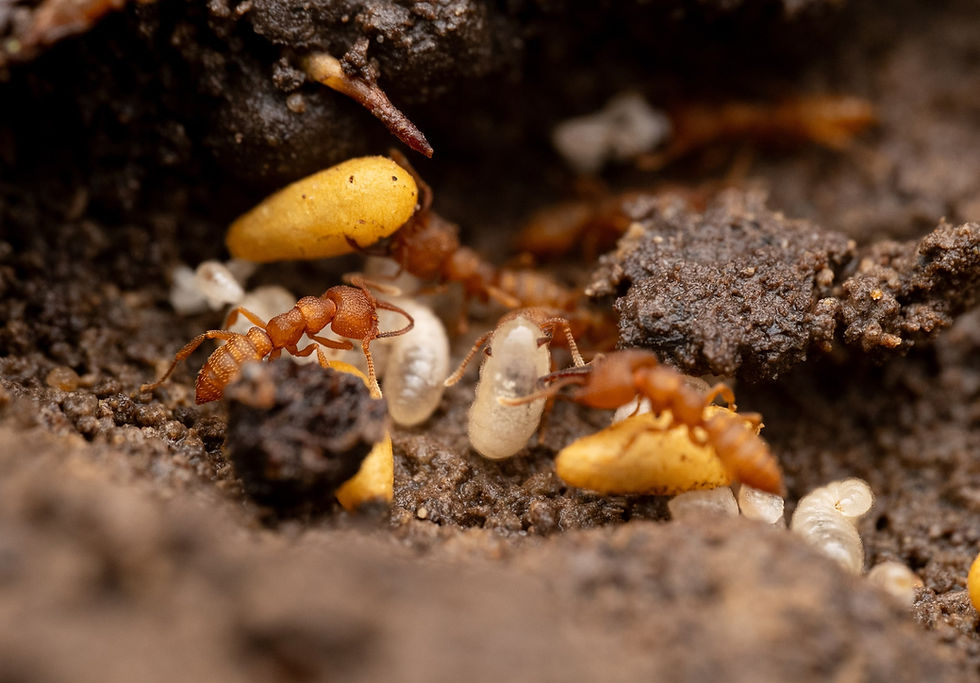Pheidole rhea is a truly impressive ant species native to the southern United States, especially Texas and Arizona. This species is considered one of the largest (if not the largest) Pheidole species in the world, known for its extremely large and powerful major workers — also called supermajors. With a deep red coloration, a high brood output, and fascinating colony dynamics, Pheidole rhea is a dream species for serious ant enthusiasts who enjoy observing distinct caste systems and large colonies.
Pheidole rhea
In the wild, Pheidole rhea builds large underground nests in dry, sandy soils and open grasslands. Colonies are monogynous, meaning there is one queen per colony, and can number in the tens of thousands of individuals under ideal conditions. The species is strongly dimorphic, with:
-
Minor workers: performing most tasks such as foraging and brood care.
-
Massive supermajors: among the biggest in the Pheidole genus, used for defense and processing large food items.
Their foraging activity is primarily during the day, and they are aggressive feeders that readily accept protein. The colony’s division of labor and rapid growth make them both visually and behaviorally fascinating.
Their colonies are monogynous, typically housing a single queen and up to 5,000 workers. N. albisetosus ants are highly aggressive, with a fast bite but no sting. They are known for their ability to forage quickly and efficiently, working both individually and in groups to bring larger prey back to the nest. In competition with other ant species, such as the red harvester ant, they employ tactics like blocking competitors' nests to delay their foraging.
-



































